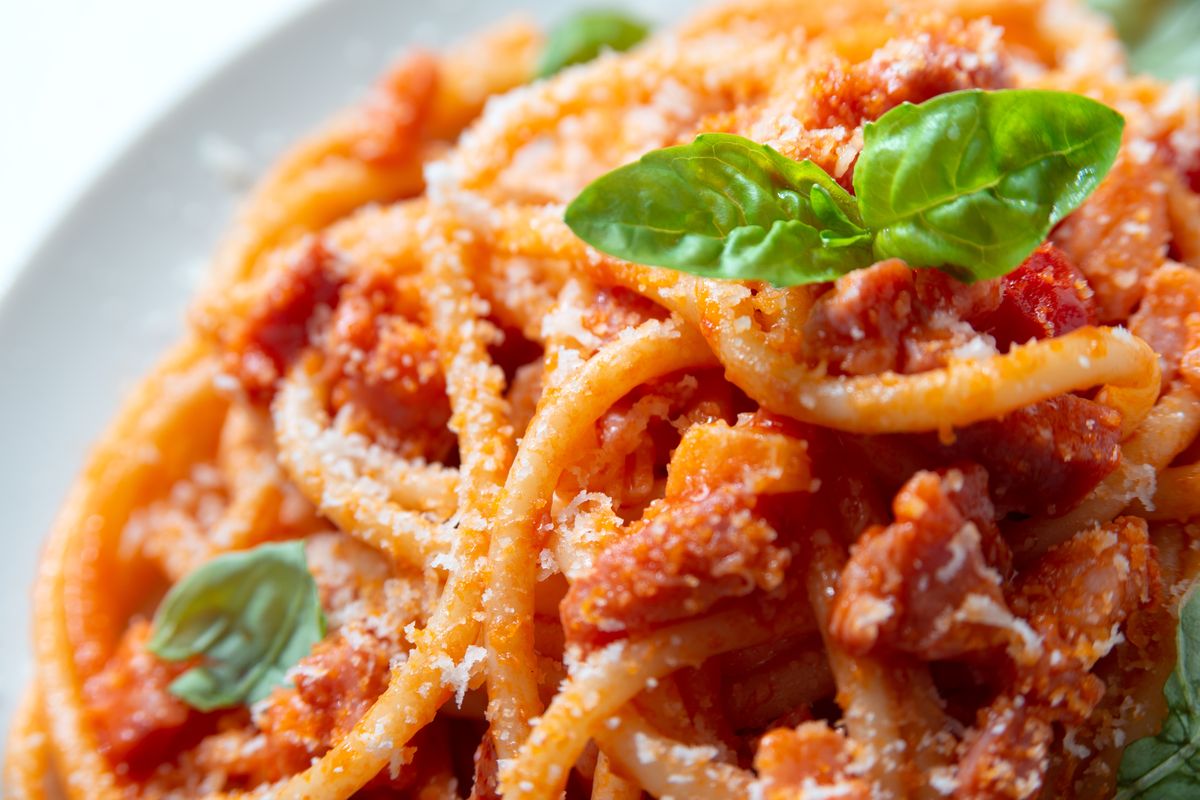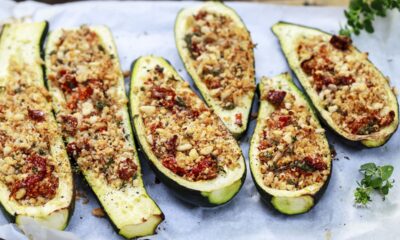Recipes
Perfect gricia pasta: all the secrets to prepare it with our video recipe!
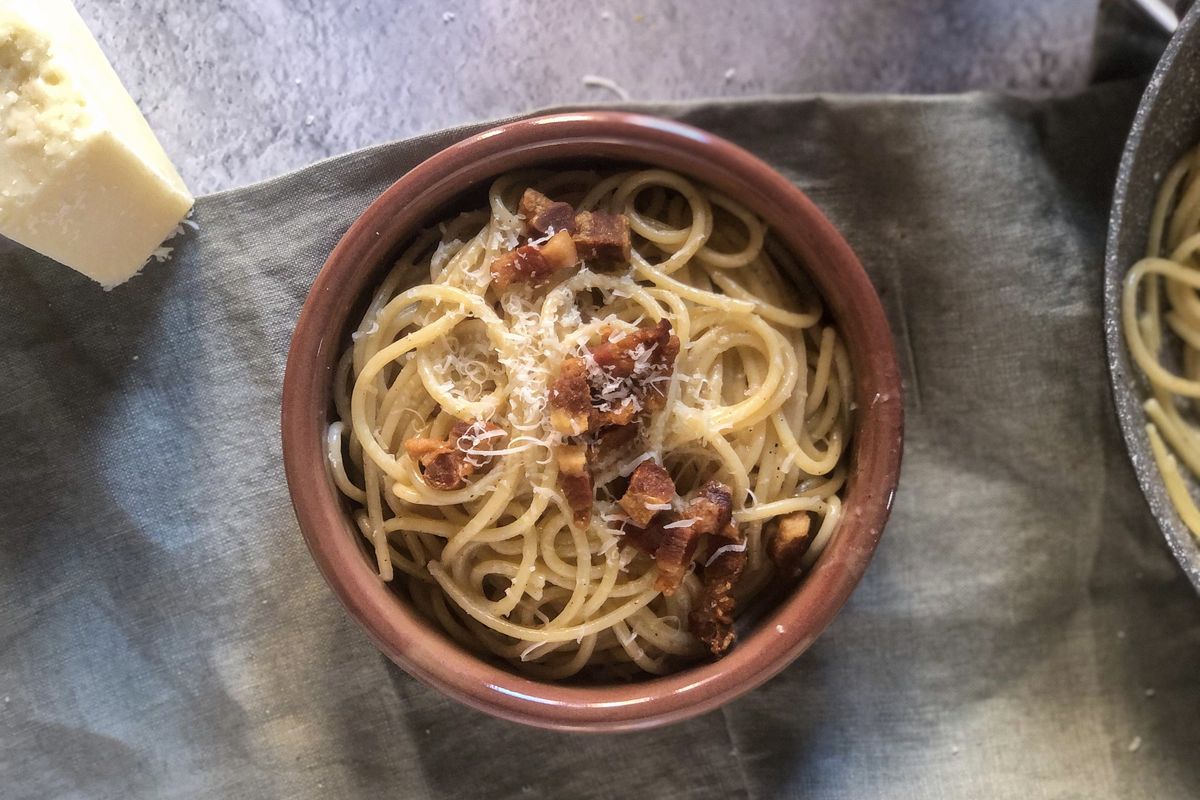
Let's find out how to prepare a delicious pasta alla gricia with the original Roman recipe: its secret lies in the right creaminess and balance between the ingredients!
Today we are going to discover the original recipe for pasta alla gricia, a very tasty and apparently simple dish, but which, like all preparations made up of just a few ingredients, certainly involves some pitfalls as regards the consistency and the right balance of the strong flavors that make it make up.
In short, do you want to find out how to prepare a perfect plate of spaghetti alla gricia? Follow us in the kitchen and we'll find out together (but we'll also see many variations and curiosities about this fantastic first course). So, without further ado, here is the gricia, the Roman recipe that the whole world envies us and its video recipe !

Gricia: ingredients
Before going to the stove, let's take a step back… First of all, what is gricia ? The ingredients are practically the same as amatriciana , but without the tomato, and this is why it is also called white amatriciana; others instead like it more to imagine it as a cacio e pepe with the addition of bacon! Together with the aforementioned sisters and carbonara , it completes the picture of the most famous first courses of Roman cuisine .
In reality, however, more than white… it would be better to say gray . The pasta takes its name from this color, which is more or less the shade that is created by mixing the cheese with the pepper! This dish, in fact, is nothing more than a pasta with bacon and pecorino cheese, two ingredients with a strong flavor and which must therefore be balanced in the best possible way.
The quality of the products is essential: buy some Roman pecorino still to be grated and quality guanciale , but above all, forget about the canned bacon! For 4 people , therefore, get yourself:
- 400 g of spaghetti
- 300 g of bacon
- 250 g of Roman pecorino
- Salt and Pepper To Taste
- cooking water to taste
How to cook pasta alla gricia
1. Heat a pot of water in which you are going to boil the pasta. Once the water boils, salt lightly (the pecorino and guanciale are already very flavoursome) and throw away the pasta. Some chefs say that another secret lies in boiling a piece of rind together with spaghetti: try it!
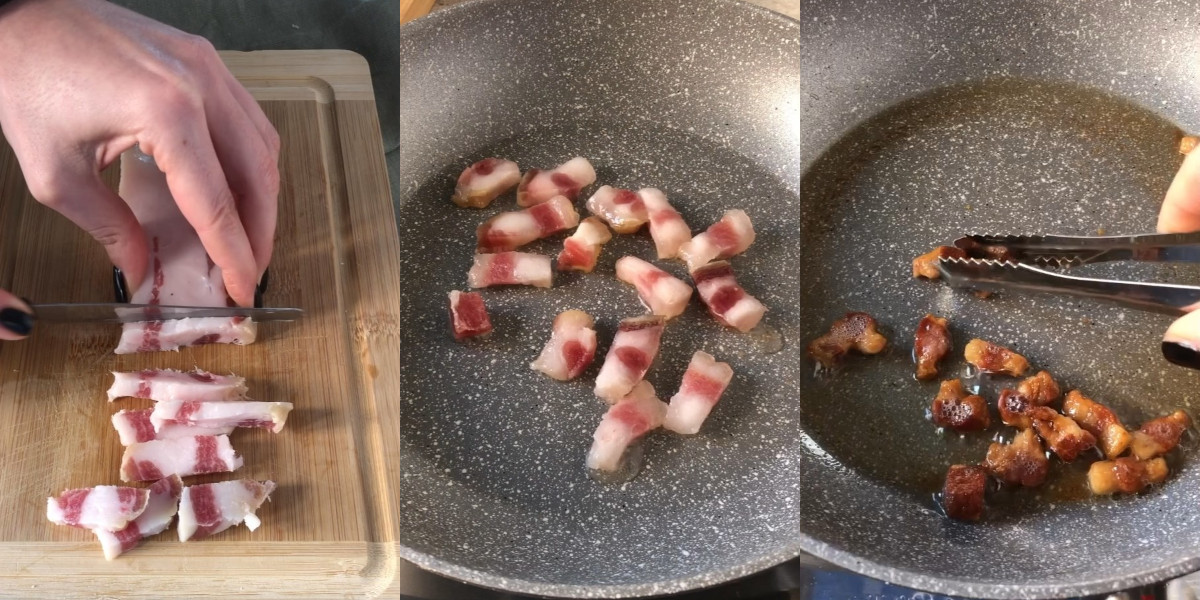
2. Cut the bacon into strips, removing the rind first. Once cut into small pieces, brown it in a pan until it is crunchy, without adding oil or other fats and set aside.
3. Grate the form of pecorino and leave the cheese aside.
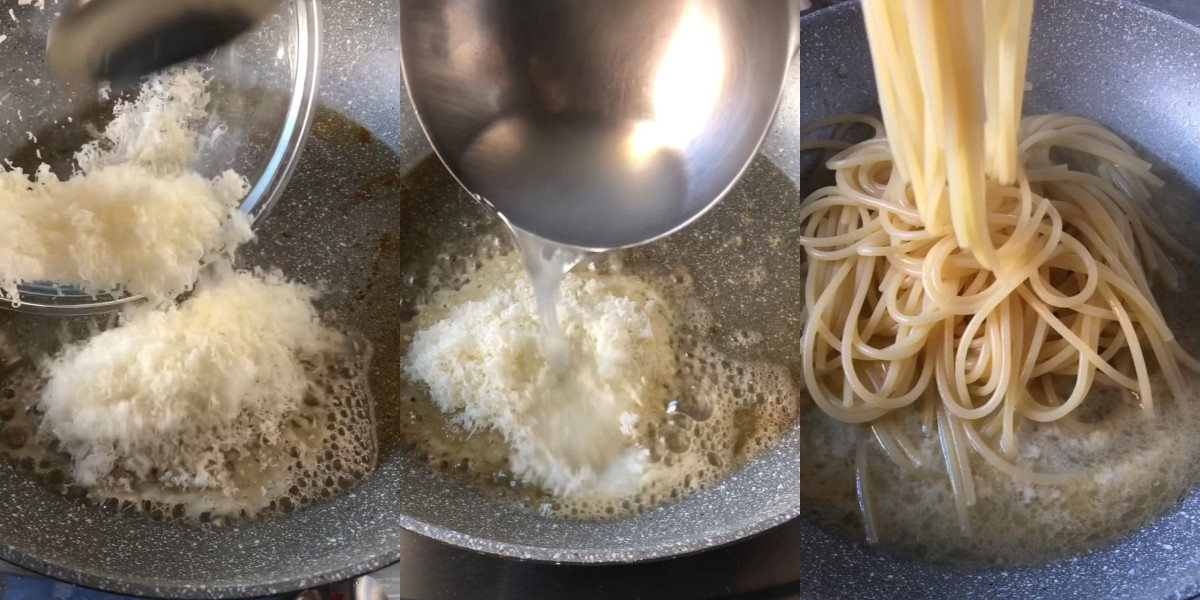
4. At this point in the recipe, the simplest way to proceed is to sauté the pasta. But be careful: you will need a nice glass of cooking water! Then put the pecorino cheese in the pan where you cooked the guanciale, and once the pasta is ready, drain it and add the cooking water, pepper and salami.
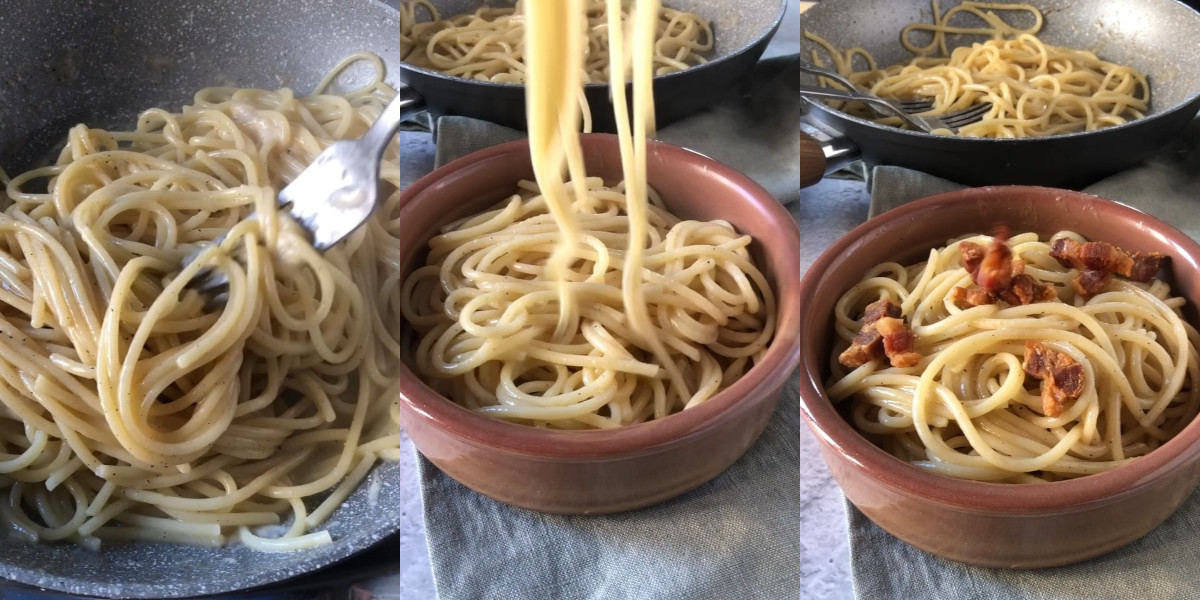
5. Light the fire and sauté it quickly to mix everything well, then serve
The preparation is complete. Bon appetit !
How to make a creamier gricia
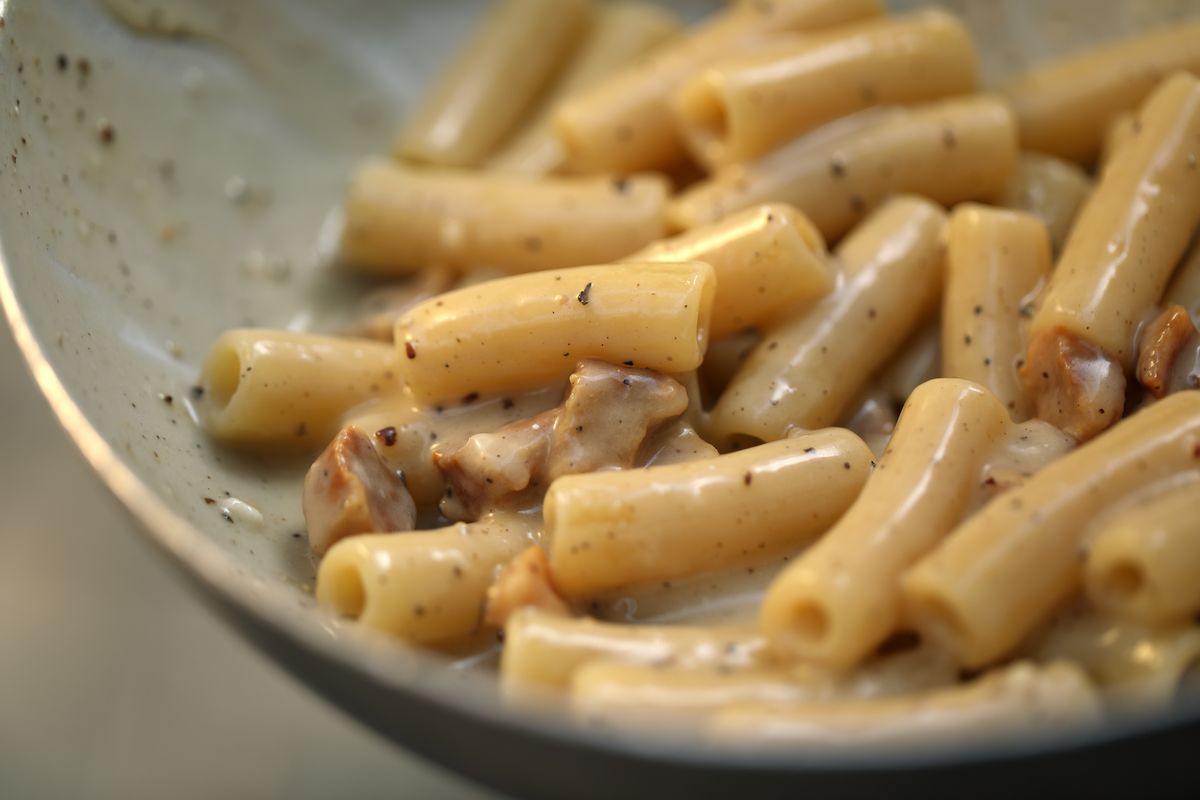
To obtain a greater creaminess , however, you just need to make a simple pecorino sauce.
- Put the pecorino in a container together with a drizzle of extra virgin olive oil , a handful of pepper and a ladle of cooking water.
- Blend everything with an immersion blender , checking that the sauce reaches the right consistency,
- Once done, season the pasta with the pecorino cream, adding the crispy bacon and a handful of pepper.
How to avoid lumps?
The risk, whichever way you proceed, could be that of obtaining unpleasant lumps of cheese due to the thermal shock . To avoid this inconvenience, three small precautions will suffice:
- wait a moment from when you have taken the cooking water;
- also make sure you have grated the cheese finely;
- act fast!
Gricia sauce: what kind of pasta to use?
What is the original gricia? Good question! We have chosen spaghetti in our recipe, but as always, the choice of pasta is up to you. If you want to follow tradition, however, then you have to prepare either spaghetti or rigatoni, perfect for collecting the sauce . But let's see some delicious alternatives !
– Spaghetti alla gricia: as we said, spaghetti is a long pasta perfect for picking up creamy sauces like in this case. If you love quick cooking and this type of pasta, you have found the recipe for you.
– Tonnarelli alla gricia: the main variant of spaghetti is tonnarelli , slightly more full-bodied and ideal for those who love to feel pasta under their teeth.
– Rigatoni alla gricia: for a delicious alternative you can use rigatoni, which are ideal for those who prefer short pasta. Also in this case we are dealing with a pasta that collects the sauce well thanks to the small streaks on the surface and the hole in the center . A recommendation: the rigatoni must be nice al dente!
– Mezze Maniche alla gricia: this type of pasta is also widely used for this recipe. Mezze Maniche are also a classic for carbonara, they should be left slightly al dente and they pick up the sauce very well. To try!
– Bucatini alla gricia: the Roman tradition prefers them paired with amatriciana , another excellent first course from Lazio… but who says you can't try them in this version too? The bucatini, thanks to their hole in the center, will cook in a short time and will be able to collect the sauce well … although don't expect the same result as spaghetti.
Gricia pasta: origin
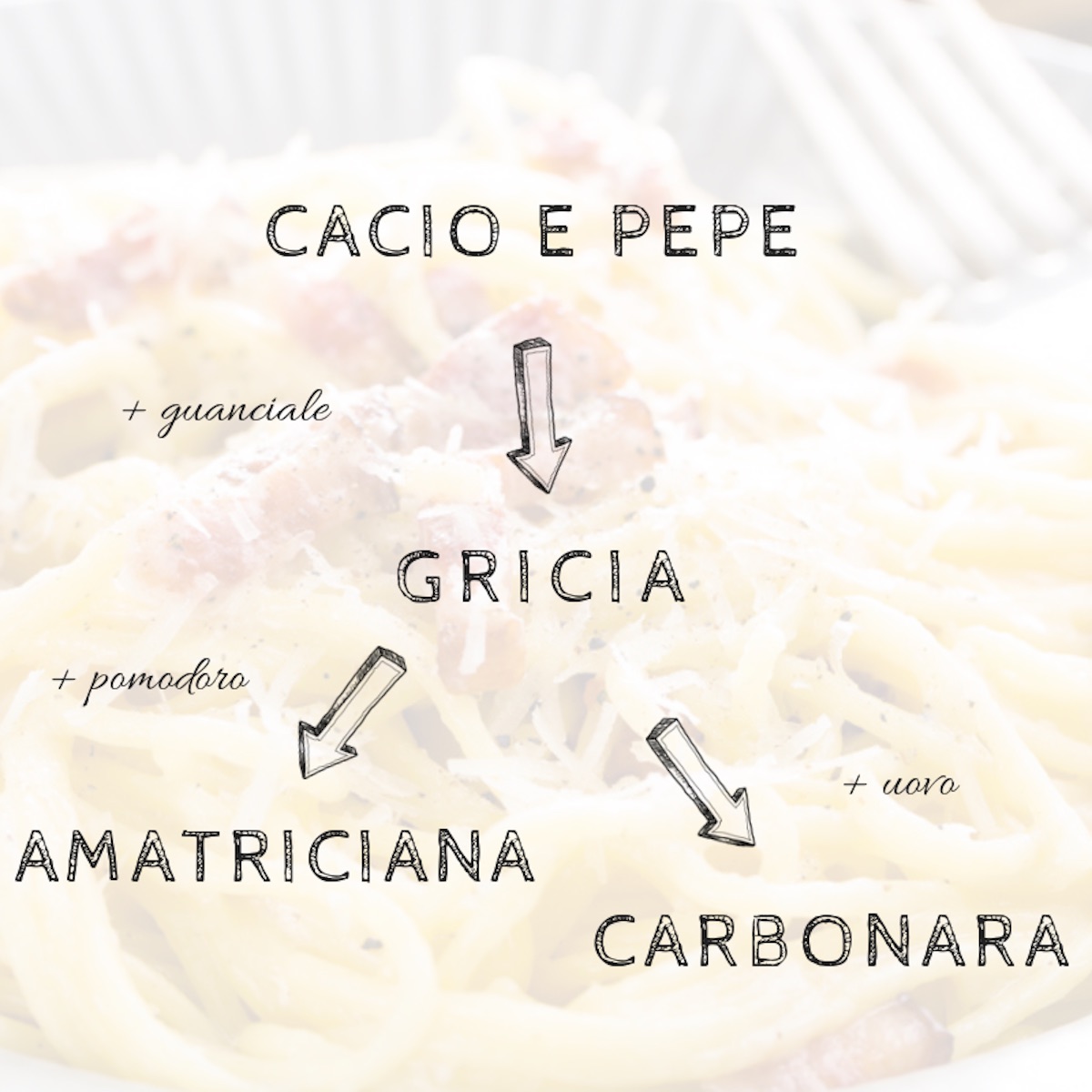
We have already mentioned the etymology and meaning of its name, but what is the story of this dish that has become a symbol of Lazio cuisine? To find out, you have to take a step back to the ancient Roman taverns, the favorite place for the birth of this very rich and tasty pasta.
Perhaps you don't know that during the period of maximum expansion of the Roman Empire, the taverns were born, and it seems that it was in some of these that the gricia was born, around 400 AD
In addition to the gray colour, which we have already mentioned, the name could refer to the Grici , i.e. the bakers from Germany and Switzerland and in particular from the Canton of Grisons. They spent their time in the shop, where it seems they gave rise to this dish, easy to prepare and simple because it consists of just a few ingredients .
Other theories, however, refer to Grisciano , a small village in the province of Rieti, which would have given birth to this pasta dish. A story that somewhat resembles that of Amatrice , among other things a few steps from the village.
Also try our pasta with guanciale : follow our original recipe step by step and you will obtain (another) dreamy first course!
Riproduzione riservata © - WT


